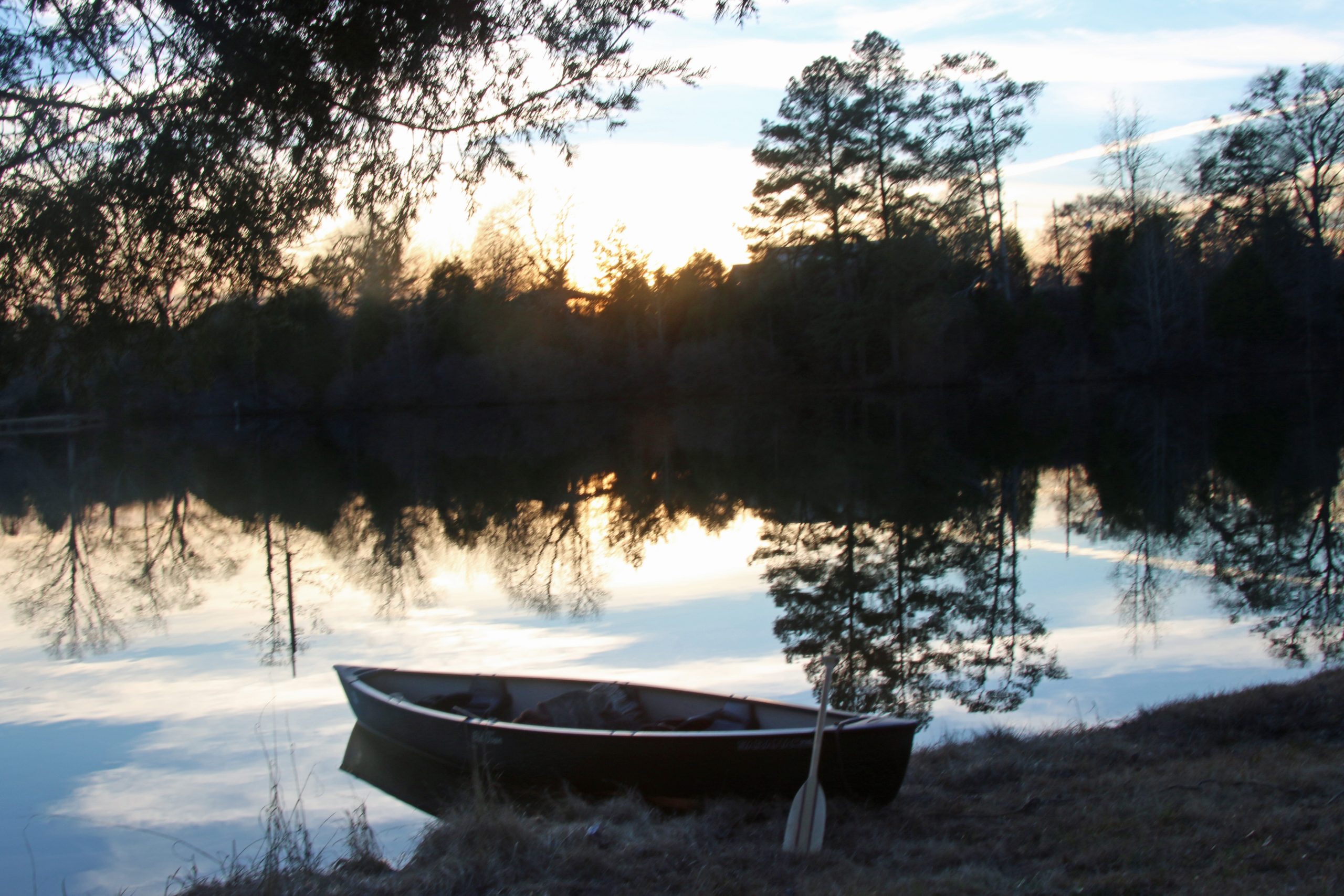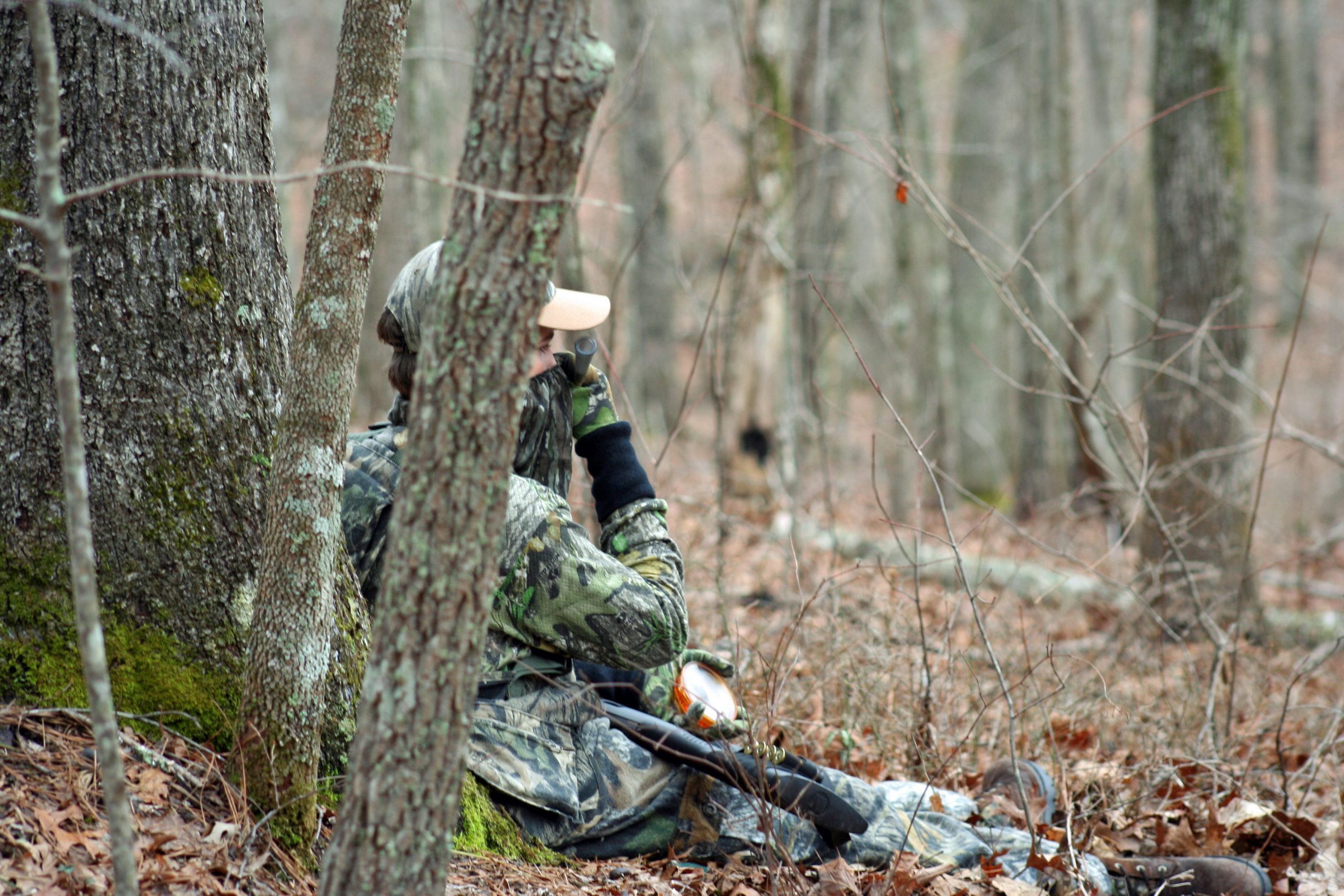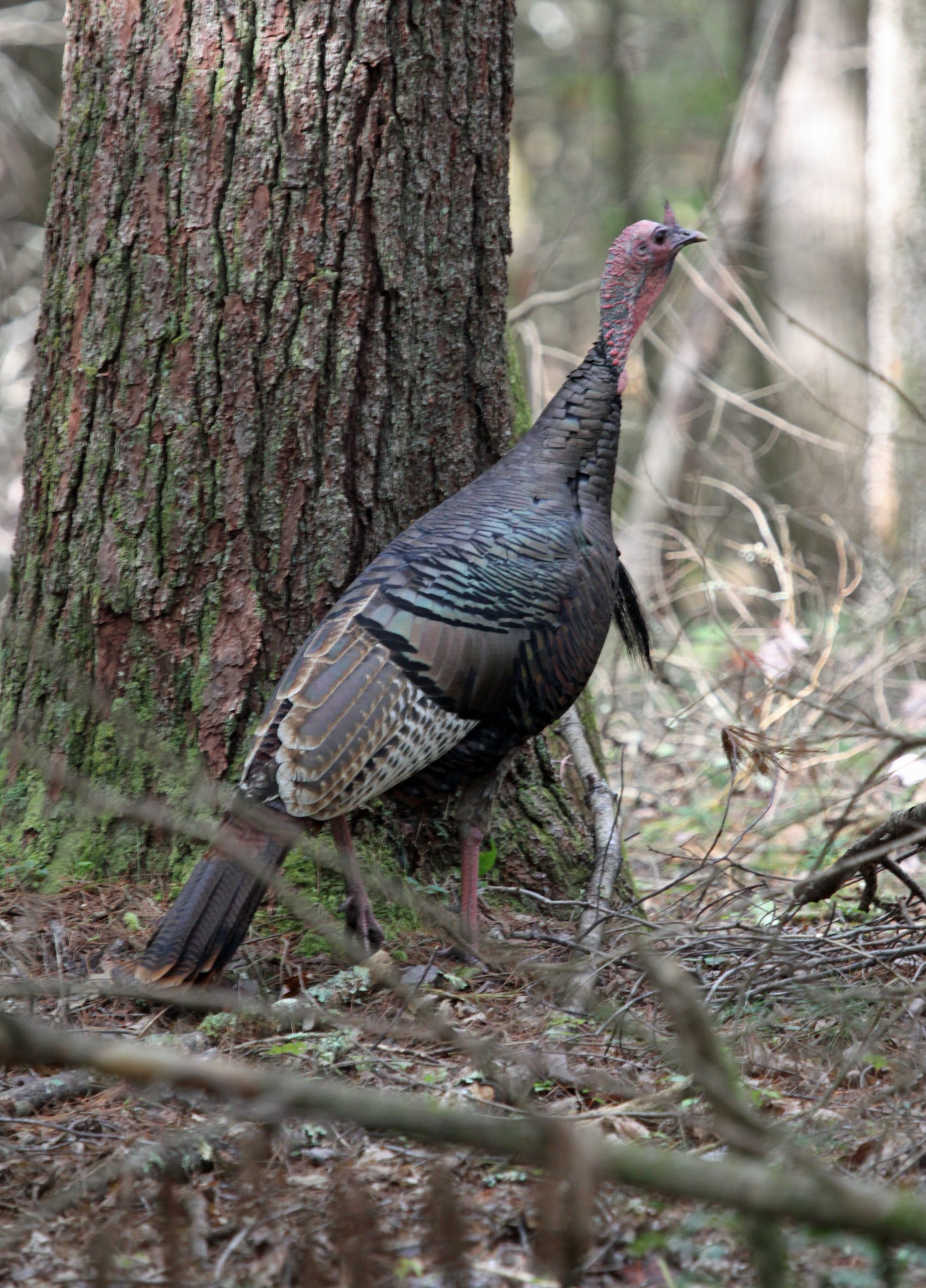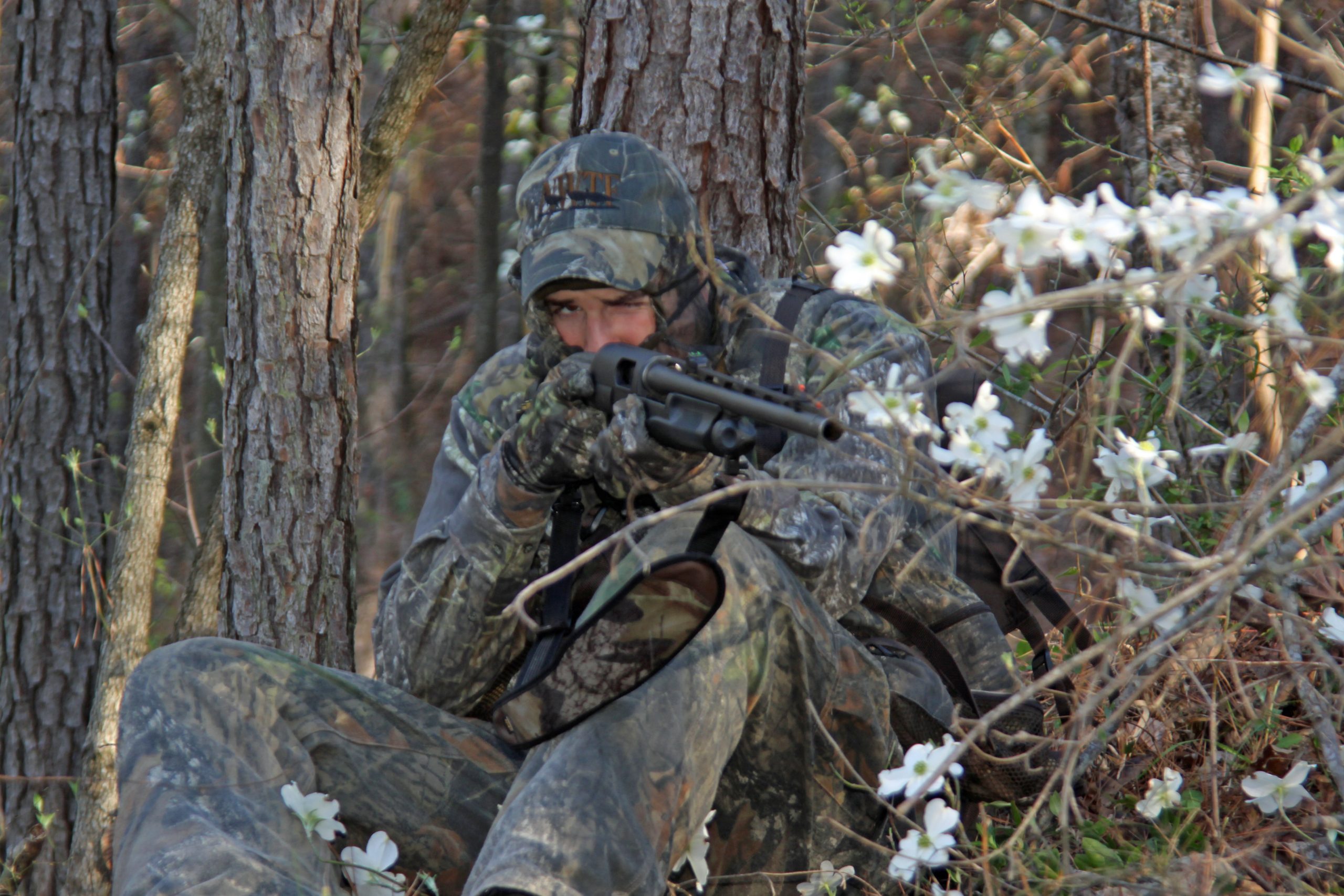Spring Turkey Hunting From Waterways
Two camo hunters hurriedly trudge down a hardwood ridge for some spring turkey hunting. The morning darkness was quickly fading, and the eastern sky began to glow a fiery pink. The pair hustled to get into listening position. Would the old Tom divulge his roosting spot again today? Would today be a day for some water turkey hunting?
Suddenly a thunderous gobble broke the morning silence. It was him. The old big Tom the two turkey chasers have been after the past three mornings. One hunter plied a few soft tree yelps and the bird gave an immediate response. The hunting duo had him pinpointed on the next ridge.
The pair continued their trek to close the distance between them and the bird. At the bottom of their ridge, they realized a major obstacle, water. A small slough on the upper reaches of a lake prevented the pair from getting any closer to the gobbler. A continuous series of yelps had the old bird gobbling passionately. But, he would not fly across the slough.

Canoes and other small watercraft can be used reach an isolated gobbler.
Many times, over the course of a season, turkey hunters have faced similar situations. A lake, river or creek has saved a gobbler from the roasting pan. However, turkey hunter can employ a different tactic in reaching a wary gobbler near a waterway.
Canoes, kayaks and small boats can save turkey hunters foot travel, time and frustration in establishing a calling position on an otherwise impossible mission to reach a bird. Spring turkey hunting from a small watercraft can open up many available locations that other hunters are not willing or able to approach.
Watercraft selections
Kayaks have become popular in recent years. Many are designed for fishing from small creeks to saltwater bays. These crafts are lightweight and can easily be transported on the roof rack of a car, SUV or in the bed of a truck. Canoes are a little larger but are also easily transported. And most canoes can hold two occupants safely.
“I have used a small boat to cross a lake to get to a gobbling turkey,” mentions Andy Barker of Munford, Ala. “It saved a lot of walking getting to the other side.”

Utilizing canoes and kayaks to slip in on a turkey can save time and legwork.
Canoes have been used for centuries in transported hunters and trappers down many miles of tributaries across the United States. Modern canoes are lightweight and stable. Also, they have the capacity to carry plenty of gear with one or two hunters aboard.
Kayaks are generally for one person, but they do have storage areas for gear. An advantage of canoes, kayaks and even small boats are that they can easily quietly propelled. Paddling is the most effective method for some stealth spring turkey hunting.
“Choose a canoe or kayak you can easily handle,” advises Scott Exum of Jacksonville, Ala. “Know your limitations and practice paddling before your hunt.”
Canoes and kayaks can be easily unloaded and transported to the water’s edge. Rubber mats or carpet placed in the bottom of the craft will help dampen any unwanted sounds. A clunk or ding on the side of a boat can alert a turkey to your presence.
Gearing up
Using a canoe or other lightweight watercraft for water turkey hunting requires some additional planning and gear. It may be wise to invest in a floating gun case. Many waterfowl hunters utilize the special floating cases just in case an incident occurs. A personal floatation device (PFD) and an extra paddle is also a good idea.

A canoe can provide plenty of room for turkey hunting gear and a buddy.
Your turkey vest, calls, and shells should be protected anytime on the water. A small amount of water from a paddle or tipping can ruin a morning’s hunt. A gear bag or tote will allow easy access when you arrive at your turkey gobbling location.
“A waterproof bag will help protect your turkey gear when paddling into position,” Exum explains. “There are various sizes available for ample room.”
Canoes allow room for extra spring turkey hunting gear that may be needed. Chairs, pop-up blinds, and turkey seats can easily be carried along if so desired. Small coolers or ice chests with bottled water, sports or soft drinks will be welcomed after the hunt.
A foldable two-wheeled canoe or kayak carrier will make transporting the watercraft from vehicle to the water an easy chore, especially for solo hunters. With two hunters the process is a snap. Also, don’t forget about a rope or strap to tie off the watercraft if needed.

Small, light-weight watercraft can put you in a position to bag a gobbler where other hunters can’t easily reach.
The beauty of using a light-weight watercraft is they can be easily and quietly drug up on shore. This allows for a quick exit of the craft and getting to a calling position. The purpose of a small watercraft for turkey hunting is to save time and effort.
Depending on the location of your hunt and the lake or creek, fishing may be a bonus. After the hunt, a slow paddle back to the vehicle can allow for some excellent fishing. A majority of small waterways receive little if any fishing pressure. Keep the tackle simple with a small rod and a few spinners or soft-plastic lures.
Before the hunt
For spring turkey hunting, a little scouting can help facilitate the hunt, especially along unfamiliar waterways. Grab a topographic map or use a satellite photo to review the area you plan to hunt and paddle. Look for launch points, bridge crossings, and property boundaries.
“It is a good idea to survey the lake or area before using a boat or canoe,” Barker comments. “It is better to know the area and any hazards before you start water turkey hunting.”

Gobbler chasers can reach remote areas where the turkeys are less call shy.
Barker mentions it is easier to see landmarks and pull out areas during daylight hours. On the morning of the hunt navigating the waterway will be simple and safer.
On tributaries with moving water, it may be easier to paddle downstream. Look for put-in and take-out points along the route. In your spring turkey hunting plan, a second vehicle may be required. It can be parked at a take-out site along the route. Or have someone meet you at a predetermined spot and time.
Don’t forget about scouting your planned spring turkey hunting area. While scouting the waterway is important, so is the area the turkeys are using. Look for roosting locations and feeding areas. Learn the best route or trail into the area after you have parked your boat.

Turkey hunters shouldn’t underestimate the benefits of using a canoe or kayak to access prime hunting areas.
In some instances when water turkey hunting, it may be only a short paddle across a lake or down a short stretch of a creek arm. Other cases may require a longer paddle and a little more time. Plan accordingly.
Old gobblers may have set up their home in remote areas only accessible by water. These birds probably have not heard a hunter’s call all season. And your approach by canoe, kayak or small boat can help fill in a blank on your spring turkey hunting tag.
This article first appeared in the April 2018 print issue of Great Days Outdoors Magazine. For more great hunting and fishing content for the deep South, subscribe to Great Days Outdoors print and digital editions or click the image to download this issue.

